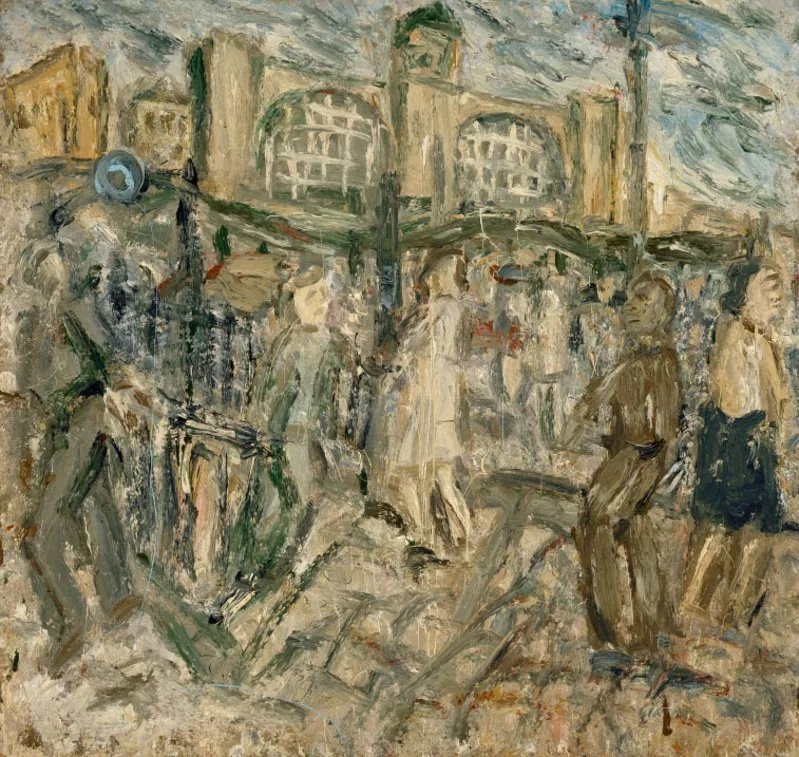That’s Not For Me
7 April 2022
Fashion isn’t everything - finding time for the ‘wrong’ kind of art.
Richard Unwin
Richard Unwin is a London-based freelance arts journalist and writer, contributing to The Art Newspaper and a number of international publications.
In June, Norway’s National Museum of Art, Architecture and Design will reopen in a vast new building in Oslo’s harbour area. Among the opening highlights will be the first show to be staged in the building’s signature Light Hall, a dramatic rooftop space for temporary exhibitions. Titled I Call it Art, the exhibition intends to take “the pulse of contemporary art in Norway today.” More pointedly, the organisers hope to explore the “boundary between who is inside and who is outside the art world”, asking “What is good art? And who decides?”
Following a formula reminiscent of the annual Summer Exhibition at London’s Royal Academy, preparations for I Call it Art began with an open call to Norway’s artists, backed-up by a country-wide search by the museum’s curators. The two exhibitions share a similar spirit of inclusiveness, with the Summer Exhibition also casting its net wide in order to offer “a unique window onto all areas of the contemporary art world.”
As the language used to introduce I Call it Art suggests, highlighting the uniqueness of open call exhibitions acknowledges the fact that, outside of such moments of fraternity, the art world tends to be something of a gated space. Or, more accurately, it is a collection of self-enclosed spaces. For better or worse, there is often an established place for certain types of work, with something of a ‘never the twain shall meet’ philosophy dictating the relationship between contrasting approaches.
The upshot is that while all working artists can be considered part of the collective artistic community, many are simply making the wrong kind of art to be on a pathway that might lead to their work appearing in top contemporary galleries and museums. From the perspective of the relevant gatekeepers, such work is likely to be too traditional, too gaudy, too much of a pastiche, or simply not of the right ‘level’ to be considered for entry. Conceptual arguments might be employed to explain rejection, but often it comes down the fact that certain work simply doesn’t look or feel ‘right’ to fit in.
Being left outside of the zeitgeist by the fashionable crowd, though, is not the same as being ‘out’ of the art world altogether. Viewed from the perspective of all work being produced today, rather than the narrower angle of artwork that aligns with certain contemporary tropes, the art world contains plenty of spaces where ‘unfashionable’ is in. These spaces might be galleries, magazines, websites, societies or social media groups. They may not get the level of attention they desire, but then there are also countless artists producing the ‘right kind of work’ who also never manage to reach a level that can sustain them as full-time professionals.
Dog portrait by Nicky Phillips.
Image courtesy of Fine Art Commissions.
Counter-intuitively, producing unfashionable work can be economically prudent. Realistic portrayals of animals, for instance, are only occasionally the primary focus of leading edge contemporary work. Nonetheless, a broad and diverse field of artists are producing pieces in that manner. One artist I recently came across, in the Scottish Borders, is producing paintings of rare birds for over £3000 a pop – it’s certainly not the ‘in-thing’ but there’s a market for them and she can work quickly. Adjacently, there is a growing cottage industry in newly commissioned pet portraiture, while both equestrian art and wildlife painting remain popular and collectable. At the top end of the field, Christie’s has a specialist department for Sporting & Wildlife Art, covering work produced from the 17th century through to the present day. As well as featuring a large amount of painting, the department also takes contemporary wildlife sculpture to auction, with individual items capable of selling for six figure sums. Fashionable or not, the department’s existence and the performance of its auctions shows that credible areas of the art market exist beyond what is most in vogue.
Similar niches exist for genres such as traditional landscape and portrait painting, certain forms of modern abstraction, and the type of sculptural work that leans to be being more decorative than conceptual. Sections of the art world may snub such work, but the fact that some may show condescension towards a particular type of art doesn’t mean it can’t still find relevance.
Rex John Whistler, (1905 - 1944), Private View, pen and ink, 12 x 17.5 cm.
Image courtesy of Sarah Colegrave Fine Art.
Portrait painting is a good example of a genre that constitutes its own well-defined field, functioning as a kind of pyramid structure with spaces like the National Portrait Gallery at the top. While work higher up the pyramid may well be acceptable to other areas of the art world, a lot of portraiture remains unfashionable. Nevertheless, artists producing portraits for private and commercial commissions often find the financial return is both higher, and more likely to materialise, compared to what they might expect to receive were they engaged in some other genre of art.
It’s worth remembering that even open call exhibitions end up being selective in one way or another. The Summer Exhibition, for example, is assembled based on the choices of guest curators and the RA’s own Royal Academicians. Perhaps in an attempt to counteract internal prejudices, the National Museum in Oslo has interestingly chosen to curate a section of I Call it Art via an automated algorithm. Whether that kind of innovation can avoid being overly random in its mode of selection, or else still be influenced by the bias and perspective of its creators, though, would seem a hard nut to crack. And, if that is the direction of travel, should we ask whether we prefer rule by machine to rule by the opinions of human tastemakers?




















